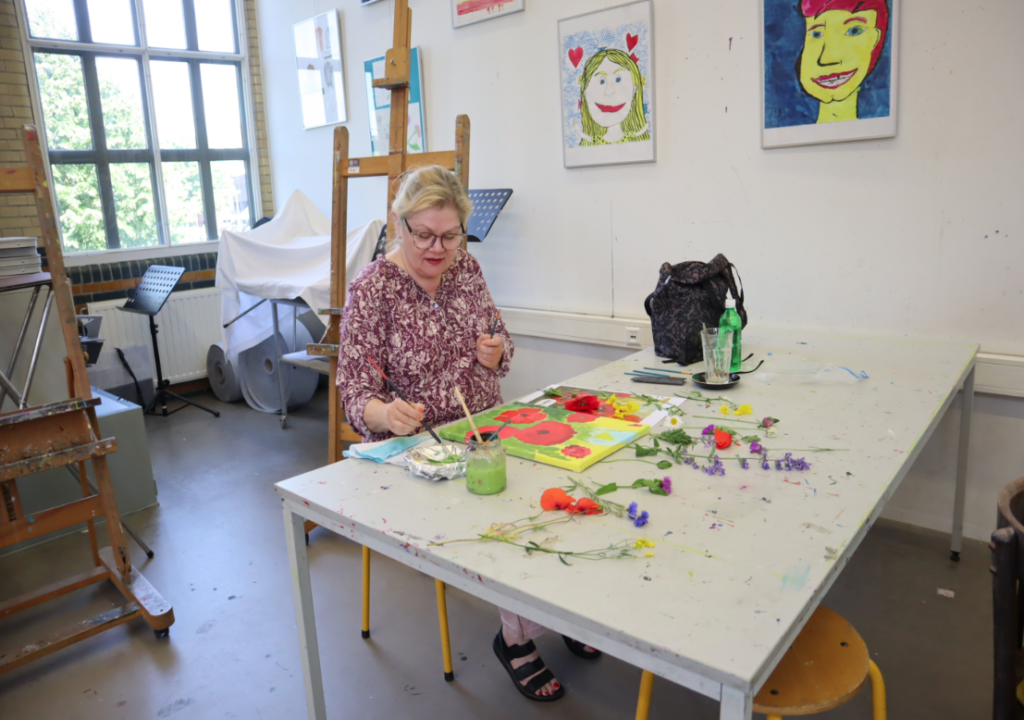Cross-sector, state-level partnerships are key to sustaining and ensuring access to creative aging programming, especially for older adults in rural communities. Research shows that these arts education programs contribute significantly to healthy aging and increased social connection. The Advancing Creative Aging in Westerns States Initiative, launched in 2023, is designed to deepen and sustain collaboration among state agency partners to advance creative aging in the Western region. Currently the Initiative includes partnership teams in Idaho, Montana, Nevada, Wyoming, and Utah. These teams include leaders from state arts agencies, state libraries, and state veterans services, and will expand to include aging services and health and human services.
Lifetime Arts will provide consulting services and information resources for multiple stakeholders across these state agencies. These resources are designed to support new and existing partnerships across state agencies and their constituent organizations. Lifetime Arts also is supporting the development and implementation of up to five creative aging programs in sector-specific host organizations in each state. These programs will serve a total of 500 older adults and help to demonstrate the benefits and efficacy of creative aging.
In this issue, we explore the emerging research and practices of social prescribing for the arts (SPA) and discuss the future of SPA efforts as a vital component of arts and health services in the U.S., especially for older adults. This issue starts framing answers to key questions related to the challenges and opportunities this practice surfaces in healthcare and creative aging. Featured in this issue is a recorded conversation between three leading experts on SPA in the U.S.: Tasha Golden, S. Sudha, and Käthe Swaback.
*This email is an abridged version of our our full issue, which contains in-depth analysis and numerous resources on social prescribing. You can read the full issue here.
Paradigm Shift: Advancing the Cultural Rights of Older People
A Free, Virtual Convening on June 6 and 7, 2023
The 3rd annual International Creative Aging Summit channeled the collective energy of more than 250 arts and aging leaders from around the globe towards an investigation of the profound shifts needed — individually and collectively — to champion and adequately invest in older adults’ creativity and cultural agency.
Through facilitated conversations and peer-to-peer exchange, this dynamic and collegial convening connected a worldwide network of colleagues working in diverse communities and sectors to advance creative aging. The Summit was designed for those who develop, deliver, and/or support arts programs by, with, and for older people including professionals from the social and aging services, and the technology, education, cultural, heritage, housing, and health sectors.
Hosted by a different country each year, the 2023 Summit was organized by Lifetime Arts (United States) in collaboration with Creative Ageing Development Agency (CADA) in England and Armas-festival, City of Helsinki, and Koy Kaapelitalo in Finland.
From the Article:
Three out of four adults age 45 and older who are lesbian, gay, bisexual or transgender say they are concerned about having enough support from family and friends as they age. Many are also worried about how they will be treated in long-term care facilities and want specific LGBT services for older adults.
These were among the findings of a recent national AARP survey, “Maintaining Dignity: Understanding and Responding to the Challenges Facing Older LGBT Americans.”
From the Article:
For the estimated 3 million LGBTQ Americans age 50 and older, the past five decades have brought triumphs that were once unimaginable, from the birth of the pride movement to marriage equality.
But now the so-called Stonewall generation — those who came of age around the 1969 uprising that galvanized the modern gay rights movement — faces a new set of challenges when it comes to aging with dignity.
From the Webpage:
We [Create Gloucestershire] were delighted to be selected as a pilot site for The Cultural Commissioning Programme that Arts Council and NCVO partnered on between 2013 to 2017. The aim of this programme was to support arts and cultural organisations to come together with public service commissioners.
It provided much needed re-thinking time in Gloucestershire and laid the foundations for a new set of relationships across arts and health partners. We set up an innovative grant programme in 2015 that gave “test and learn” capacity to 12 arts and health projects in Gloucestershire designed to generate positive health outcomes for people with long-term health conditions (eg adolescents with Type 1 diabetes).
If you are interested to know more about our projects or the wider UK programme please do read the full learning report (pdf, 2.2MB) or summary (pdf, 242KB)
